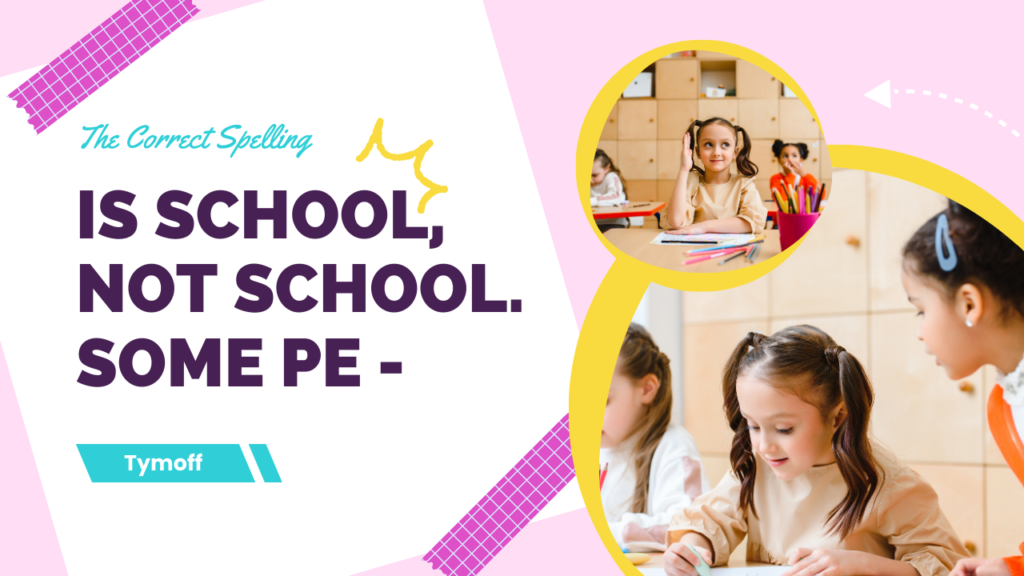
Introduction
Have you ever come across a phrase that made you do a double-take? One such word is, “The Correct Spelling Is School, Not School. Some Pe – Tymoff.” This peculiar statement might leave you scratching your head, but it opens up a fascinating discussion about language, communication, and misunderstandings.
The Confusion Explained
A Paradox in Spelling
At first glance, the phrase “the correct spelling is school not school” appears paradoxical. How can “school” be both the correct and incorrect spelling simultaneously? This contradiction can arise from several scenarios, including typographical errors, autocorrect mishaps, or playful linguistic exercises. The key is to recognize the context and intent behind the statement.
The Abrupt Ending: “Some pe – tymoff”
The second part of the phrase, “some pe – tymoff,” adds to the confusion. It’s an incomplete and unclear fragment that leaves readers guessing its meaning. This could be an abbreviation, a typo, or an inside joke known only to a select group.
Also Read: I Fear No One, But Respect Everyone. – Tymoff
Possible Explanations
Typographical Errors and Autocorrect
One plausible explanation for the confusion is a typographical error or an autocorrect issue. In digital communication, typos and autocorrect mistakes are common. What might have started as a simple message about the correct spelling of “school” could have been misinterpreted into a nonsensical phrase?
Incomplete Thoughts
Another possibility is that the phrase is an incomplete thought. It might be a fragment of a more significant sentence accidentally cut off. The true meaning remains elusive without the full context, leading to misinterpretation.
Intentional Nonsense
Sometimes, phrases like “The Correct Spelling Is School, Not School. Some Pe – Tymoff” are intentionally nonsensical. They might be used for humor, as a linguistic exercise, or as an example of how language can be manipulated to create confusion. These playful language uses challenge our understanding and highlight the complexities of communication.
Language and Communication
The Importance of Clarity
This phrase underscores the importance of clarity in communication. Language is a powerful tool, but errors or ambiguities can easily make it muddled. Clear and precise language helps avoid misunderstandings and ensures that the intended message is conveyed accurately.
The Role of Context
Context is crucial in interpreting any statement. With context, words and phrases can be understood and seem nonsensical. When faced with confusing language, seeking additional information or context can help unravel the intended meaning.
Also Read: Build Insane Triceps by Doing Skull Crushers – Laz – Tymoff
Conclusion
While “The Correct Spelling Is School, Not School. Some Pe – Tymoff” may initially seem bewildering, it serves as a reminder of the complexities and nuances of language. Whether it’s a typographical error, an incomplete thought, or an intentional play on words, this phrase encourages us to consider the importance of clarity and context in communication. So, the next time you encounter a perplexing phrase, take a moment to dig deeper and uncover the meaning behind the words.
In the end, language is a dynamic and ever-evolving tool that reflects our creativity, humor, and sometimes our mistakes. Embrace the quirks and contradictions, and remember that even the most confusing phrases can offer valuable lessons in communication.
[…] Also Read: The Correct Spelling Is School, Not School. Some Pe – Tymoff […]
[…] Also Read: The Correct Spelling Is School, Not School. Some Pe – Tymoff […]
[…] Also Read: The Correct Spelling Is School, Not School. Some Pe – Tymoff […]